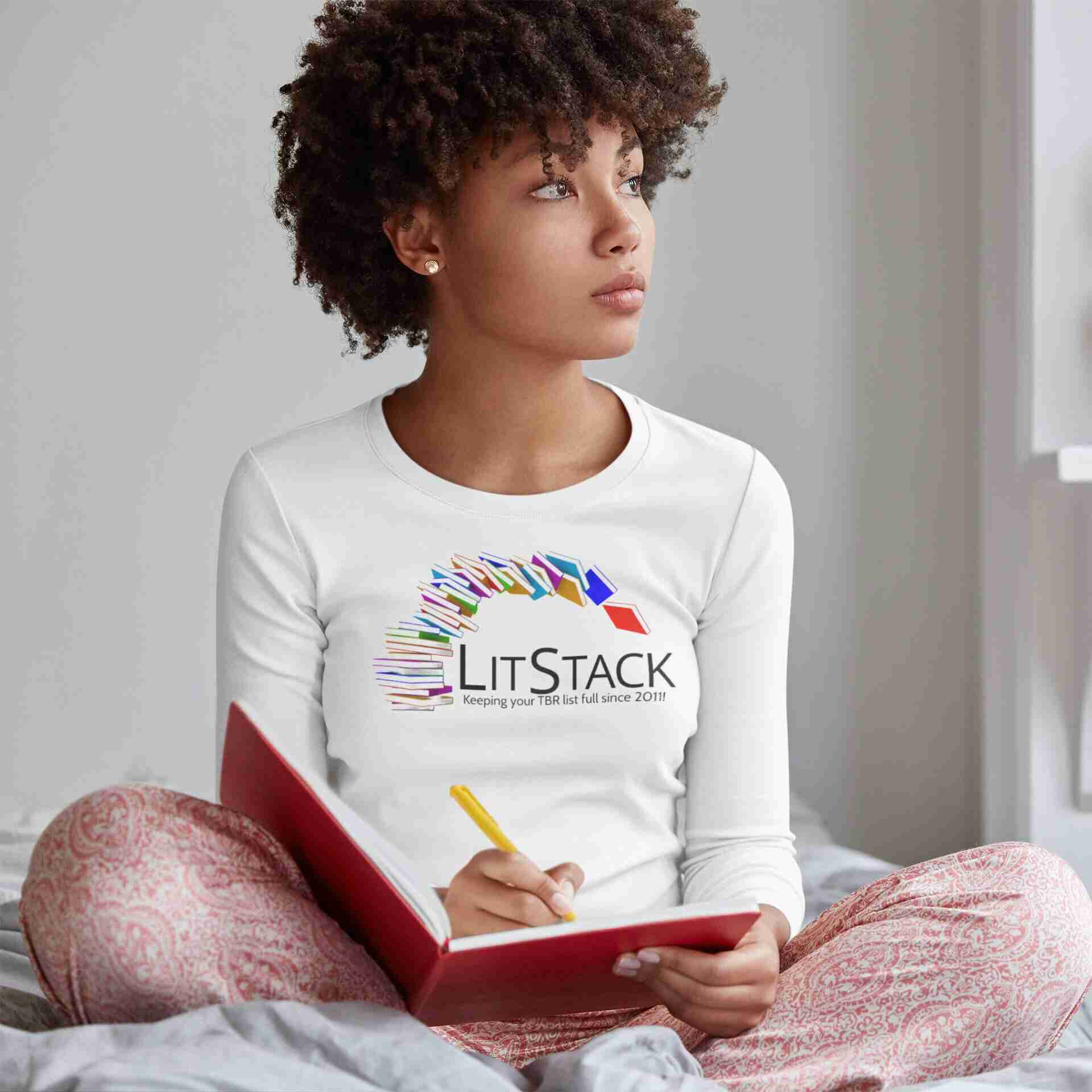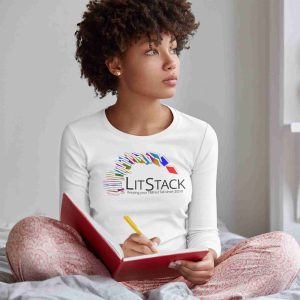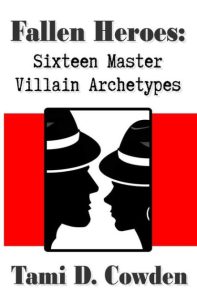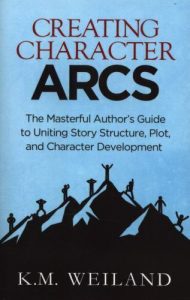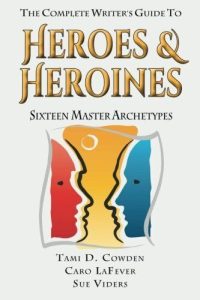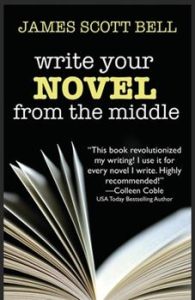Table of Contents
What Does It Mean To Go Beyond Story?
For many writers, the books they read on writing craft often focus on the larger issues of storycraft rather than the specific elements of craft that help a writer create a great story. So sometimes it’s best for the writer to define for themselves and gain knowledge of the fine print of writing–those elements of writing craft that are necessary to practice so they can write the story that readers will love.
Let’s look at five books that dive deeper into specific issues of writing craft and sharpen a writer’s skills so she crafts a story to be proud of.
Fallen Heroes: Sixteen Master Villain Archetypes, by Tami D. Cowden
The villain is the hero of his own story – and is every bit as important as the heroic characters.
This book contains the lectures and exercises from Tami Cowden’s popular online class on villain archetypes. The workshop identifies and examines the motivations of the 16 literary villain archetypes, and shows what happens when heroes and heroines turn to the dark side.
Any writer discussing the hero in their work is familiar with the Hero’s Journey. There have been countless papers and films developed and written based on Campbell’s theory. Scholars have paid less attention to and said less about the villain. Maybe this is because the villain’s motivations aren’t as easy to define as the hero’s. Cowden’s book is a remarkable examination of the villain archetype and how the writer can expand the villain into your story. Taken from her online workshop, this book delves deep into the villain’s motivations, arcs and development.
Understanding Conflict: (And What It Really Means), by Janice Hardy
Janice Hardy, award-winning author and founder of the popular writing site, Fiction University, takes you deep inside one of the most important aspects of storytelling–conflict. She’ll help you understand what conflict really is, discuss the various aspects of conflict, and reveal why common advice on creating conflict doesn’t always work.
With in-depth analysis and easy-to-understand examples, Understanding Conflict (And What It Really Means) looks at how to develop and create conflict in your novel. It also explores the things that affect conflict (such as tension), and the misconceptions that confuse and frustrate so many writers.
Hardy has a wealth of craft books and writing aids on her Fiction University site and available for purchase. But she doesn’t just focus on the story; most of her books concentrate on the underlying elements that construct strong plots and stronger characters. What makes her conflict craft book so helpful are the guidelines she suggests on how to weave conflict, and the importance of including threads of conflict throughout your story.
Creating Character Arcs: The Masterful Author’s Guide to Uniting Story Structure (Helping Writers Become Authors), by K.M. Weiland
Powerful Character Arcs Create Powerful Stories
Have you written a story with an exciting concept and interesting characters—but it just isn’t grabbing the attention of readers or agents? It’s time to look deeper into the story beats that create realistic and compelling character arcs. Internationally published, award-winning novelist K.M. Weiland shares her acclaimed method for achieving memorable and moving character arcs in every book you write.
By applying the foundation of the Three-Act Story Structure and then delving even deeper into the psychology of realistic and dynamic human change, Weiland offers a beat-by-beat checklist of character arc guidelines that flexes to fit any type of story.
Beat sheets aren’t a new tool writers use to craft their stories. Weiland’s book uniquely delves into creating character by using beats to explore the psychological aspects that affect character motivation. This book combines the foundations of the Three-Act Structure along with beat sheets to help writers map out a greater plan for their characters and deepen character development, making them come alive on the page.
The Complete Writer’s Guide to Heroes and Heroines: Sixteen Master Archetypes, by Tami D. Cowden, Caro Lvov
All fiction writers want to write stories with great heroes and heroines–characters who leap off the page and capture the reader’s imagination. Heroic characters can be broken down into sixteen archetypes. By following the guidelines of the archetypes presented in this comprehensive reference work, writers can create extraordinarily memorable characters and elevate their writing to a higher level. Throughout the book, the authors give examples of well-known heroes and heroines from television and film so the reader can picture the archetype in his or her mind.
At the very core of a character, every hero can be traced back to one of the eight major archetypes, as can every heroine. The core archetype tells the writer the most basic instincts of heroes or heroines – how they think and feel, what drives them and how they reach their goals. Whether you are a seasoned professional or a novice, The Complete Writer’s Guide to Heroes & Heroines will help you improve your own writing and help you create truly memorable characters.
Cowden gives the same treatment to the hero, along with LaFever and Viders, as she did the villain in her Heroes & Heroines book, diving deep into the archetypes that compel and motivate every story’s champion. Taking a lot of direction from Campbell’s theory and applying their own modern approach to hero theory, the authors construct a dynamic book that breaks down the elements and characteristics that not only define them but make them worth reading about again and again.
Write Your Novel From The Middle: A New Approach for Plotters, Pantsers and Everyone in Between, Edition by James Scott Bell
A powerful secret and a fresh approach to writing fiction that sells!
What’s the best way to write a “next level” novel? Some writers start at the beginning and let the story unfold without a plan. They are called “pantsers,” because they write by the “seat of the pants.”
Other writers plan and outline and know the ending before they start. These are the “plotters.”
The two sides never seem to agree with each other on the best approach.
But what if it’s not the beginning or the end that is the key to a successful book? What if, amazing as it may seem, the place to begin writing your novel is in the very middle of the story?
According to #1 bestselling writing teacher James Scott Bell, that’s exactly where you’ll find your story’s heart and heat. Bell’s “Mirror Moment” is the secret, and its power is available to any writer, at any stage of the writing process.
Bringing together years of craft study and personal discovery, Bell presents a truly unique approach to writing a novel, one that will stand the test of time and serve you all your writing life.
Bell has always been my go-to source for truly inspiring books on honing my writing skills, and Writing from the Middle is a definite favorite. If you’re stuck on the book’s middle, or can’t quite figure out your ending, grab a copy of Bell’s well-researched title to learn the best techniques to move away from the blocks hindering you and approach your writing in a way you’ll never see coming.
Conclusion
We hope you see that these five books are an essential addition to your writer’s toolkit. The morning will come when you sit down to write and you will feel as if you’ve forgotten everything you know about the writing craft. It is in moments like those that these books take on a greater purpose than the knowledge they impart on your first read. These books will take you back to the basics, reminding you of your grasp of the elements of writing craft, and helping you manage the fine print details that create a great story.
~Tee Tate
As an Amazon affiliate, LitStack may earn a commission at no cost to you when you purchase products through our affiliate links.

